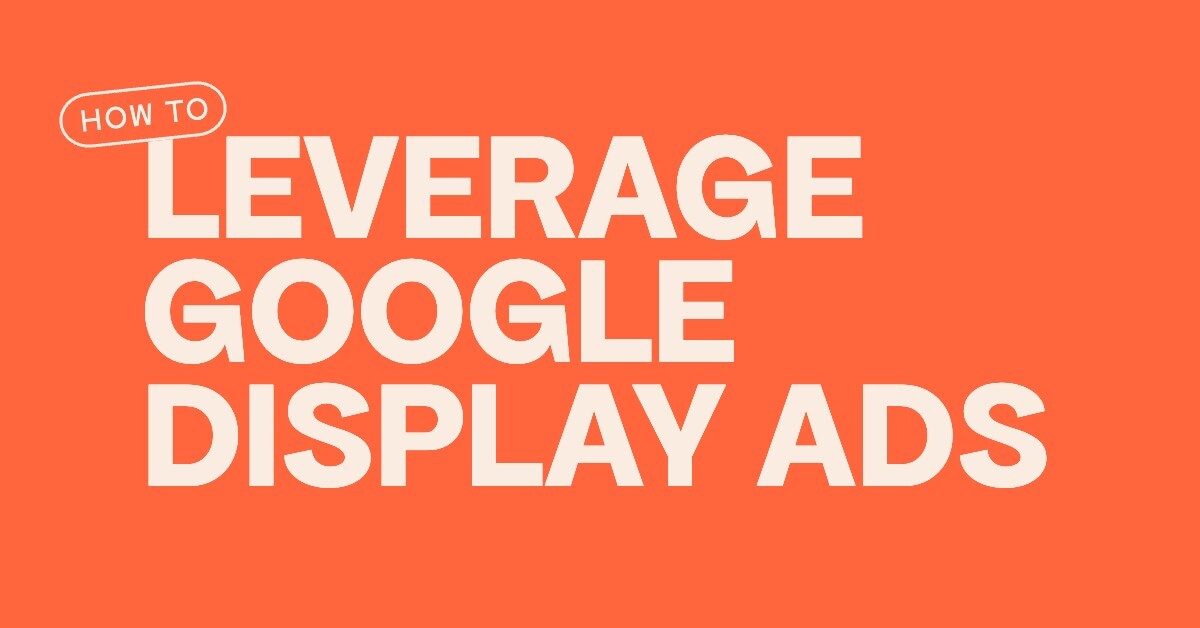Google Ads is an incredibly diverse and robust system, with so many different ad formats and placement options. And while search and shopping campaigns typically get the main focus (and the largest investment of ad spend), Google Display Ads can be a vital part of a brand’s overall ad strategy— and success.
In this post, we’re going to go over practical strategies for how to successfully incorporate Google Display Ads into your campaigns to maximize reach, re-engage users, and increase overall conversions.
Why You Need Google Display Ads
As a quick refresh, Google’s Display Ads appear on third-party publisher websites. If you’re browsing recipes on Food & Wine and see a video ad in the sidebar selling tickets to a wine tasting, that’s probably a Google Display Ad.

Brands often use Display Ads for retargeting, showing products to users who have either interacted with the business’s website, landing pages, ads, or even a particular product page recently. Some advertisers also use Display Ads for cold targeting with demographic, customer segmentation, or interest-based targeting.
The idea is to reach potentially-interested or known-interested users with relevant messaging in a visual format. You’ll generate interest as they’re doing something else online, and ideally re-engage customers. As a result, Display Ads can play an important part in the overall ad funnel— as long as you’re implementing them correctly.
Creating Strong Display Ad Visuals
Display Ads either consist of an image or a video in various sizes, both of which can technically be text-only visuals. As a result, the visuals you choose here play an essential part of campaign success.
We talked to Austin LeClear, Co-Founder of GrowMyAds. Here was his best advice about creating strong Display Ad visuals:
- Avoid clutter. Clean, high-quality images often perform best. If you want to promote a single product, feature just that product. Any images and videos should be visually interesting but not so chaotic that it’s distracting.
- Include branding. At least test adding your brand’s logo somewhere on the image or video in order to build brand awareness and leverage brand recognition.
- Opt for high resolution. Skip out on grainy images and videos, ideally using the maximum resolution possible for each image format.
- Include multiple formats. You’ll see that there are multiple format options for images and videos, with unique aspect ratios. Upload key visuals in each essential format to increase your odds of a strong placement and to test which perform best.
You can learn more about Google Display image sizes to ensure you’re off to a good start.
How Display Ads Fit Into Larger Campaigns
Google’s Display Ads, as we’ve already mentioned, can play an important part in your overall ad funnel. They can be used to generate interest in cold audiences, or re-engage existing users who already have some relationship with your business.
This is reflected in Google’s line of products.
Google’s Responsive Display Ads, for example, personalize ad images and messaging based on what they know about the customer, increasing the odds of a conversion. Their system can now automatically generate videos for your review, based on images you’ve uploaded and those sourced from your site. (That said, Austin still recommends making and testing your own video assets, too.)
Display Ads are also built into Google’s relatively new Performance Max campaigns. These campaigns combine ad options across Google’s entire inventory of products, including Search Ads, Shopping Ads, and (of course) Display Ads to create a single, streamlined approach to ad creation and management.
As a note, it’s always important to consider your underlying strategy for Display Ads and how they fit into your larger ad goals.
When it comes to Performance Max campaigns, for example, Austin noted that you want to choose Display Ads that line up with the Shopping and Search ads you’re creating within that larger campaign. Performance Max campaigns should contain ads with the same objective, such as generating leads or promoting a new line of products. The ads need to be cohesive to work well and provide accurate data for testing purposes.
What Metrics to Watch When Testing Display Ads
When running Display Ads, testing is a critical part of long-term success.
Austin shared that while it’s common for Display Ads to have much lower conversion rates in general than both Shopping and Search Ads, that’s to be expected. The average conversion rate for Display Ads is currently around .77%, though this can vary based on factors like industry and time of year. That said, it’s still important to track conversion rates and ensure that you’re getting some results.
You also want to track the following metrics, in addition to your conversion rate:
- Impressions, to see how many people are seeing your ad
- Click-through rate (CTR), to see how many people are interested enough they’re clicking on the actual ad
- Ad cost, often charged per thousand views (CPM), to ensure that your campaigns have a positive ROI
Take advantage of attribution tracking. Users may not convert on the first Display Ad they click, but they might click and convert on another Display Ad or another touchpoint later on.
Final Thoughts
Display Ads can be a vital part of your overall Google Ad and PPC strategy, so take the time to create solid visuals that will appeal to your audience— and their pain points. Snappa can help you quickly create gorgeous images, with plenty of free-for-commercial-use stock images, drag-and-drop design software, and a library loaded with customizable templates.
Ready to create Google Display Ads for your business? Get started with Snappa free today!

